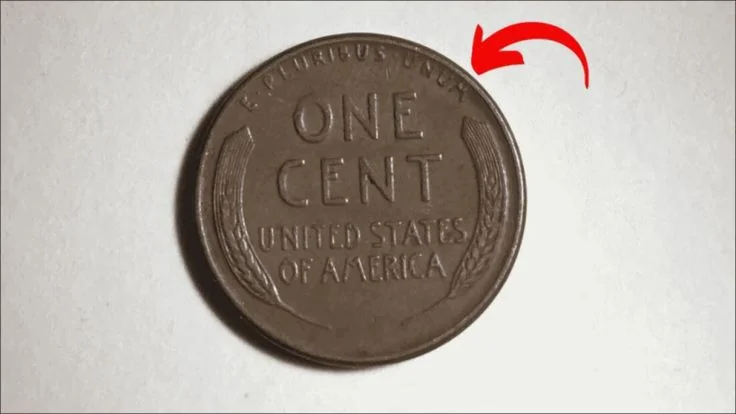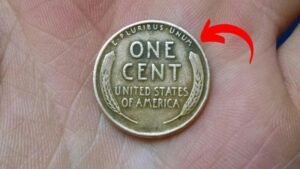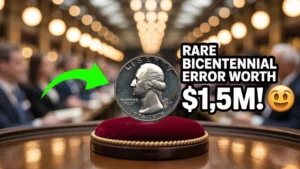Imagine finding a penny in your change that’s worth millions. Sounds like a fantasy, right? The Lincoln Wheat Penny, a humble coin from decades past, could turn this dream into reality. Some rare versions are valued at up to $5 million, and they might still be hiding in your pocket. Read on to uncover the secrets of this numismatic treasure and join the hunt!
What Is the Lincoln Wheat Penny?
The Lincoln Wheat Penny, or Wheat Cent, is a one-cent coin minted from 1909 to 1958. It features Abraham Lincoln’s profile on the front and two wheat stalks on the back, symbolizing America’s agricultural roots. While most are worth just a cent, rare varieties could make you a millionaire. Could one be in your change jar?
The Fascinating History of the Lincoln Wheat Penny
In 1909, the U.S. Mint celebrated Abraham Lincoln’s 100th birthday with a groundbreaking coin designed by Victor David Brenner. It was the first U.S. coin to feature a real person, replacing the symbolic Lady Liberty. Over 25 billion were minted across Philadelphia, Denver, and San Francisco, circulating through the Great Depression and two World Wars. But a few rare errors, like the 1943 copper penny, turned these cents into numismatic legends.
The 1943 error occurred during World War II when copper was reserved for the war effort, and pennies were made of steel. A handful of copper planchets were accidentally struck, creating coins now worth millions. This mistake sparked a modern-day treasure hunt that still captivates collectors.
Why Is It Worth Millions?
Certain Lincoln Wheat Pennies fetch astronomical prices due to rarity, condition, and historical significance. The 1943 copper penny, with only 10–20 known examples, sold for $1.7 million in 2010 and could be worth $5 million today. Other rare varieties, like the 1955 doubled die or 1909-S VDB, also command high prices.
Here’s a quick comparison of valuable Wheat Pennies:
| Coin | Rarity | Estimated Value |
|---|---|---|
| 1943 Copper Penny | ~10–20 exist | Up to $5 million |
| 1909-S VDB | 484,000 minted | Up to $2.3 million |
| 1955 Doubled Die | 20,000–24,000 minted | Up to $125,000 |
| 1914-D | 1.2 million minted | Up to $1.7 million |
| 1922 No D | Missing mint mark | Up to $500,000 |
These coins are prized for their scarcity and the stories they tell, making them a hot topic in numismatics.
How to Hunt for Your Own Treasure
Ready to join the treasure hunt? You don’t need a metal detector—just a sharp eye. Here’s how to start:
- Check Your Change: Rare pennies can still appear in bank rolls or coin jars.
- Look for Key Dates: Focus on 1909-S, 1914-D, 1922 No D, 1943 copper, or 1955 doubled die.
- Visit Coin Shops: Local dealers or estate sales may have unappraised gems.
- Join Communities: Connect with collectors on forums like CoinTalk or at coin shows.
If you find a promising penny, don’t clean it—cleaning can ruin its value. Use a magnifying glass to check for errors like doubled text or missing mint marks. Authenticate with professional grading services like PCGS or NGC.
Jaw-Dropping Facts and Records
The Lincoln Wheat Penny is full of surprises. Here are some incredible facts:
- Record Sale: A 1943-D copper penny sold for $1.7 million in 2010, with estimates now reaching $5 million.
- Wartime Error: Only a few 1943 copper pennies were made due to a minting mistake during WWII.
- Collector’s Dream: A teenager found a 1943 bronze penny in his cafeteria change, later valued at over $200,000.
- Mass Production: Over 25 billion Wheat Pennies were minted, yet some remain ultra-rare.
Here’s a table of notable auction records:
| Year | Coin Type | Sale Price | Auction Year |
|---|---|---|---|
| 1943 | Copper Penny | $1.7 million | 2010 |
| 1909-S | VDB Penny | $2.3 million | 2012 |
| 1914-D | Lincoln Wheat Penny | $1.7 million | 2016 |
| 1955 | Doubled Die Penny | $125,000 | Recent |
These records fuel the excitement of finding a life-changing coin.
Expert Tips for Coin Collectors
Numismatic experts share insider secrets to maximize your hunt:
- Educate Yourself: Read “The 2026 Red Book” for coin values and varieties.
- Use a Magnet: Test 1943 pennies; copper ones won’t stick, unlike steel.
- Store Safely: Keep coins in protective holders to preserve condition.
- Avoid Fakes: Counterfeit 1943 copper pennies are common; verify with PCGS or NGC.
- Be Patient: Rare coins take time to find, but the thrill is worth it.
Networking with collectors at coin shows or online forums can also uncover hidden gems.
Frequently Asked Questions
Q: How can I tell if my 1943 penny is copper?
A: Use a magnet. If it doesn’t stick and weighs 3.11 grams, it might be the rare copper version. Get it authenticated by PCGS or NGC.
Q: Are all Wheat Pennies valuable?
A: Most are worth a few cents, but rare dates, mint marks, or errors like the 1943 copper or 1955 doubled die can be worth thousands or millions.
Q: Where can I find rare pennies?
A: Check pocket change, bank rolls, old coin jars, estate sales, or coin shops. Online platforms like eBay or Heritage Auctions are also great.
Q: Why is the 1943 copper penny so rare?
A: During WWII, pennies were made of steel to save copper. A few copper planchets were accidentally used, creating rare coins.
Q: Can I clean my penny to increase its value?
A: No! Cleaning can damage the coin and reduce its value. Handle by the edges and store properly.
Conclusion: Start Your Treasure Hunt Today
The Lincoln Wheat Penny is more than pocket change—it’s a piece of American history with the potential to make you rich. From the legendary 1943 copper penny to the iconic 1909-S VDB, these coins captivate collectors with their rarity and stories. The thrill of finding a $5 million penny keeps hobbyists searching through change jars and coin rolls. Start your hunt today—check your pennies, join a coin club, or visit a local dealer. Who knows? The next million-dollar coin could be in your pocket. Share your finds in the comments or explore more numismatic adventures!



